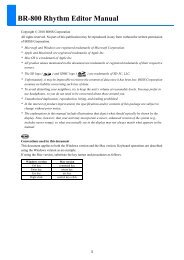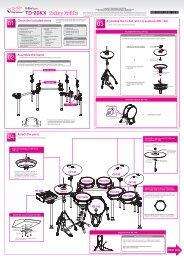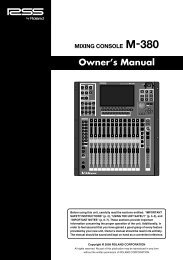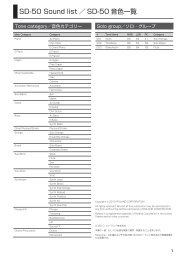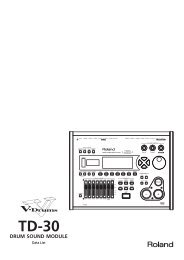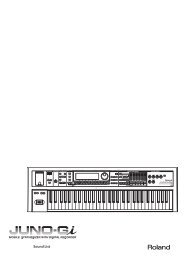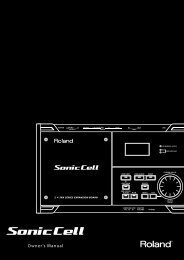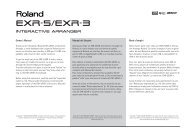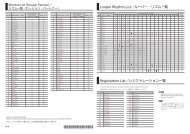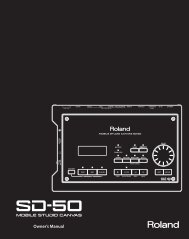GAIA Exploring Sound (PDF) - Roland Corporation Australia
GAIA Exploring Sound (PDF) - Roland Corporation Australia
GAIA Exploring Sound (PDF) - Roland Corporation Australia
Create successful ePaper yourself
Turn your PDF publications into a flip-book with our unique Google optimized e-Paper software.
The Importance of Shape<br />
Just before we start to categorize these sounds, there are two<br />
more useful terms. If you look again at each wave shape we have<br />
shown so far they seem to repeat themselves across the screen.<br />
This type of repetition we refer to as Periodic, and therefore we<br />
call these waves Periodic Wave Shapes.<br />
Try selecting the Wave called “Noise.” Does it look periodic? Can<br />
you see anything that looks repetitive? Wave shapes like this are<br />
called Aperiodic.<br />
Now copy this table into your workbook or on to a piece of paper:<br />
Wave Shape Character <strong>Sound</strong>s like?<br />
Sawtooth brassy, string like Tuba (low range)<br />
Square<br />
Pulse<br />
Triangle<br />
Sine<br />
We have provided a suggested answer for the sawtooth wave<br />
merely as an example. Every person’s musical taste will differ, so<br />
please feel free to write your own opinions for all shapes.<br />
By far the most important point for this exercise is that you learn<br />
to recognize each wave shape by its sound. As you cover later<br />
lessons these sounds will become more familiar to you, but it<br />
would be of great advantage to you if you can establish a sense<br />
of recognition early.<br />
By the way, a wave shape we call the Super Saw is also available.<br />
Please try it. It is a unique sound used on a range of <strong>Roland</strong><br />
synthesizers for several years. However, at this stage it is difficult<br />
to explain, so we will leave it for a later lesson.<br />
Please try all the wave shapes, including their variations. With time<br />
you will learn to recognize them all by their Tone Color. This<br />
familiarity with their sound will be a powerful tool once you begin<br />
making your own patches.<br />
Noise<br />
Firstly, notice the names we have given to each of the wave<br />
forms. Can you see why we use these names?<br />
Now complete the table. In the character column write down a<br />
brief description of each sound. In the “sounds like” column write<br />
down the name of the acoustic instrument that you believe<br />
sounds most like each wave shape.<br />
25




